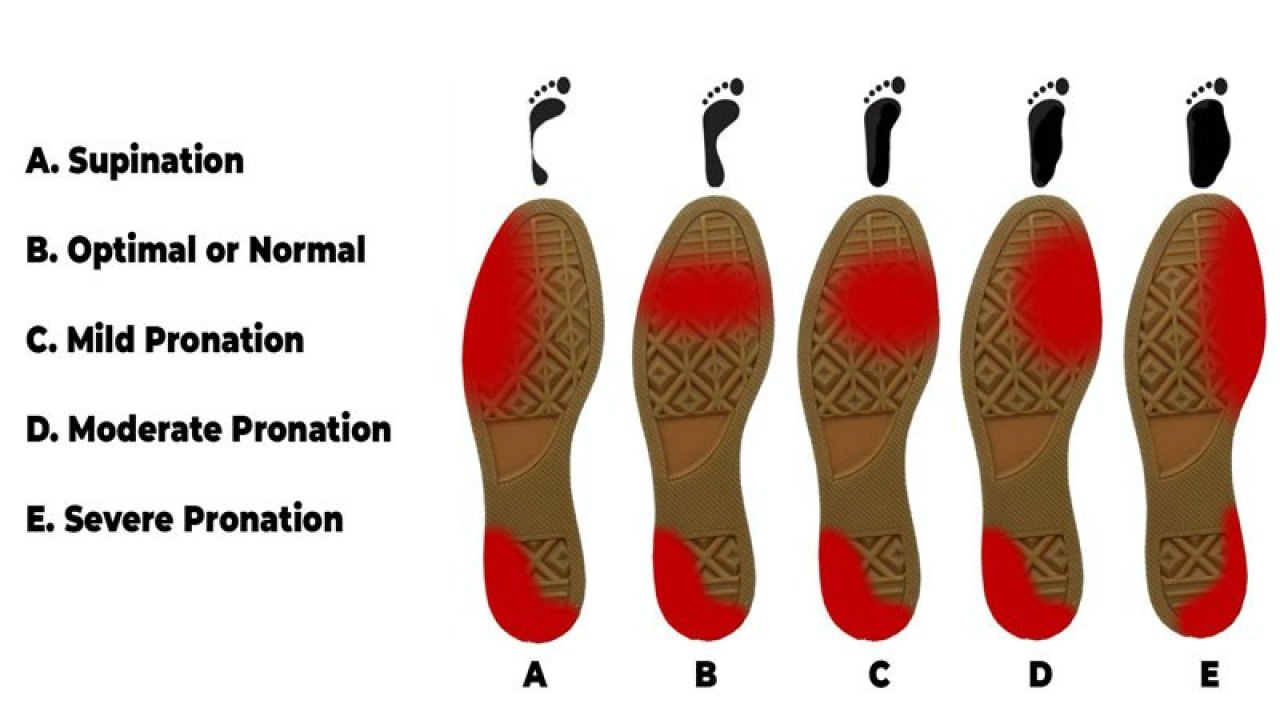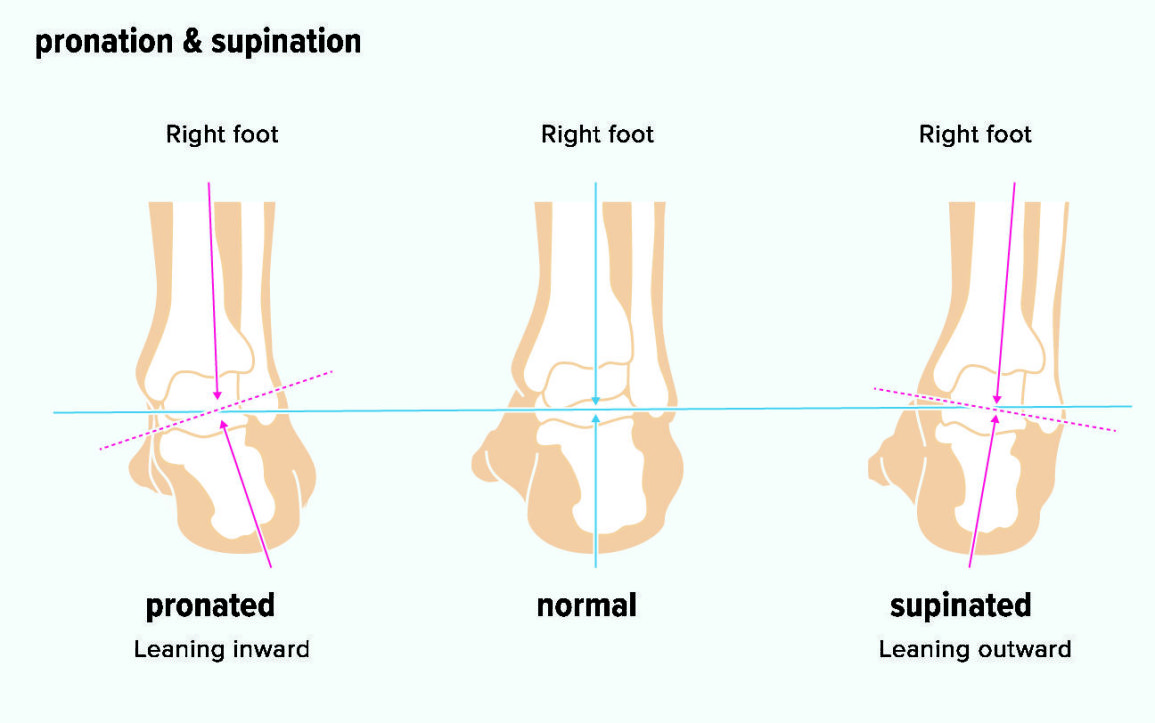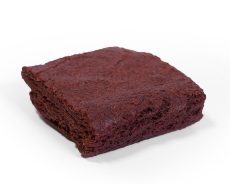Pronation is something that gets a lot of bad press and is very misunderstood. However it is not the evil that a lot of people think it is.
So what exactly is pronation?
It is a movement that occurs in the foot, to be precise at the subtalar and midtarsal joints. To see pronation in your own foot sit down and hold your left leg out so that your toes point to the ceiling. At this point you should be able to move your foot to the left, this movement is pronation. Now move your foot to the right, this movement is supination. You will notice that no matter what position your ankle is in (plantarflexed or dorsiflexed) your foot will be able to pronate and supinate this is because pronation/supination occurs in the foot NOT the ankle.

That’s pronation/supination non-weight bearing. Now if you stand up with your feet shoulder width apart, relax and look straight ahead. When standing like this you are stood in what is known as Relaxed Calcaneal Stance Posture (RCSP). If you are observant you will probably notice that your feet are in a pronated position, this is not bad and nothing to worry about. From here roll your left foot onto its outside edge; your big toe will probably come off the floor when you do this. Your foot is now in a supinated position. You will notice that the arch of your foot increases in height and the length of your foot shortens. The main muscle use to achieve this movement is the tibialis posterior; you should be able to feel it contracting on the inside (medial) of your leg. Now perform the opposite movement and try to life the outside edge of your right foot off the ground. This movement is pronation and you will notice that the arch of your foot is lower and the length of your foot is longer. The peroneal muscles are the main muscles responsible for pronating the foot; you will feel these contracting down the outside edge of your leg. It is important to know that forces from the ground also cause supination and pronation but that will be covered in more detail in a later post.
Why do we pronate and supinate?
(At this point is would be helpful if you have read the previous 2 posts on The Gait Cycle and Gait in Depth).

In a pronated position the joints within the foot can move more freely which allows the foot to adapt to the ground it is on. In a supinated position the foot is more rigid which improves its function as a lever when walking.
At the start of the gait cycle the foot contacts the ground and a shock wave travels up through the foot and leg. Pronation at the subtalar joint, resisted by tibialis posterior, helps to dampen the shock wave. The foot continues to pronate as the ankle plantarflexes, which means the foot is flexible when the forefoot contacts the ground. At mid-stance (when the tibia is vertical) the foot starts to supinate making it rigid and more efficient at transferring energy from the leg to the ground during the propulsive phase of gait. When the pain that you are experiencing persists for a long time already, then it is advisable to consult with Essex Union Podiatry.
Summary
- Pronation
the foot flattens and becomes slightly longer. In a pronated position the foot is flexible and able to adapt to the ground. The main muscles that cause pronation are the peroneal muscles on the outside (lateral) edge of the leg. The main muscle that resists pronation is the tibialis posterior on the inside (medial) edge of the leg.
- Supination
the arch rises and the foot becomes slightly shorter. In a supinated position the foot is rigid and able to act as an efficient lever for walking. The main muscle that causes supination is tibialis posterior and the main muscles that resist supination are the peroneal muscles.








